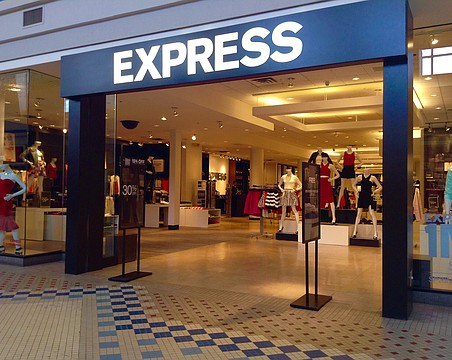A Gradual Success
By regularly changing their approach, Lori and Juan Davis are growing their clothing company, even as the U.S. apparel industry shrinks. The business is building a new facility to expand capacity.
COMPANIES by Janet Leiser | Senior Editor
It was do or die: Close the business or press on, success a distant goal.
For six years, Fast Lane Clothing Co. scraped by on just enough to pay the bills, with little left for salaries, let alone extras. Despite a significant jump in sales, there was little profit. The company's 1992 gross income was a mere $2,000.
Bruce Zimmerman, who had ran his own business, told his daughter and son-in-law, Lori and Juan Davis, it might be time to close the struggling apparel company, to get regular jobs with regular paychecks. The U.S. apparel industry was shrinking as China and other countries with cheap labor produced more goods for far less.
But Fast Lane still owed money. And, besides, the couple hadn't yet given up hope.
"Getting out really wasn't an option because we didn't have the money to pay back what we'd borrowed," Juan Davis says. "We had to stay in to at least pay the bank back."
Sales and profit improved gradually. In 1995, sales hit $650,000 and the company made a profit, Juan Davis says, adding, "We realized we were on solid ground."
Ten years later, in 2005, revenue was $2 million, Juan Davis says. And the company met or exceeded its profit goal of 10%. It now has 11 full-time employees and two part-timers.
Plus, on Aug. 1, the company was named one of five bay area businesses as a finalist for the Greater Tampa Chamber of Commerce's Small Business of the Year Award. The award is for companies with five to 20 employees.
Past revenue growth and awards though, Fast Lane's story is one of a company willing to reinvent itself to survive, as well as thrive.
Lessons learned
Lori Davis, a triathlete, was a Miami high school horticulture teacher when she returned to Tampa in 1986 to work full-time at the clothing venture she'd started a few years earlier in her spare time. Her father, who owned a carpet store, co-signed a $20,000 line of credit and rented her a room in an old house next to his carpet warehouse.
She'd started Fast Lane to manufacture and sell spandex bike shorts because others asked about the brightly colored shorts she made to replace the standard black shorts worn in the early '80s. In the beginning, she sewed them herself and sold them at meets.
"My strengths were finding great fabrics that people would say, 'Oh that's beautiful,'" Lori Davis says. "My weakness was sales and marketing. I had no idea what was the best way to sell the product, to market the product. That's where Juan stepped in and pulled that all together."
It's obviously impossible to run a successful company by selling a few pairs here and there or even a hundred pairs sporadically, she says.
In 1994, Fast Lane's apparel line was expanded to include applique T-shirts and Toucan Dance Hawaiian shirts and shorts sold mostly at coastal resorts in Florida and the Caribbean. Fast Lane dropped the bike shorts after Nike and others started selling sportswear made overseas at a fraction of the cost.
The company tried direct marketing to sell its merchandise, but made little progress. It established a network of independent sales reps that sell the Hawaiian outfits to all the small beach shops, a system that still works for the company. Other shirts sold with a company's logo or as a company uniform are sold only through ad specialty distributors.
"There was no magic," Juan Davis says. "Any marketing idea or sales strategy we could come up with, we tried."
Sales increased.
So did the company's profits, as the couple learned to be selective and to turn away large orders with thin margins. If a job wasn't going to be profitable, Fast Lane declined it.
And if a customer didn't have good credit, a credit card or the ability to prepay, Fast Lane would pass up the business. That was a lesson learned the hard way. One year, Fast Lane's bad debt amounted to 6% of sales. The company's target profit margin is only 10%. Today, bad debt, accounts more than 30 days past due, is seven-tenths of 1% of sales, Lori Davis says.
The couple began earning salaries and hiring employees. In 1996, the company bought a 7,500-square-foot building in Drew Park, an industrial area east of Tampa International Airport.
Changing to survive
Business hummed along over the next five years. To boost sales, the company brought its T-shirt applique process in-house so the company could meet deadlines more quickly. Some companies place orders at the last minute. Fast Lane can usually turnaround a custom order quickly, something overseas manufacturers can't do.
Then came 9/11.
"The phones stopped ringing overnight," Lori Davis says.
"And if they did ring," her husband adds, "it was to cancel an order."
The company didn't lay off any of its employees, but it did cut the work week to four-and-a-half days from five and shave those hours off each employee's salary.
Within a few months, the company found a new niche. It began making T-shirts with flags on them to sell to community colleges, schools, clubs and businesses.
Today, the company has three niches: Hawaiian shirts, sold at resort shops or made for companies that use them as uniforms or for promotions; a Scrub Cap Nation line of shirts and hats for the medical field; and applique T-shirts sold locally to businesses, clubs, churches and schools.
The company is building a new 10,000-square-foot facility on 1.5 acres in East Tampa, two blocks south of Hillsborough Avenue. When that's completed in 2007, it plans to hire its own sewing staff of as many as 50 workers instead of using contract workers. In addition to lowering costs by eliminating a middle man, it will enable the business to better control its products and to expand its offerings.
Also, Lori Davis has come up with a new pair of spandex athletic pants that have a pocket sewn into a leg seam to hold a key and a gym or credit card; she has a patent on the product.
As the company keeps on growing, Fast Lane's executives know one thing for sure: The market is constantly changing, and so are they.
Trends
A Shrinking Industry
Growth in overseas imports and technological advances will lead to a 46% decline in employment in the apparel and textile industry through 2014, compared with a projected increase of 14% for all industries, according to the U.S. Department of Labor, Bureau of Labor Statistics.
The report cites relaxed trade regulations as the biggest factor influencing future employment patterns. The apparel industry is labor intensive, so it's vulnerable to competition from nations in which workers receive lower wages.
In the United States, 285,000 people were employed in the apparel industry in 2004.
U.S. companies continue to move assembly operations to low-wage countries to compete in the marketplace, which means machine operators with low skills will be the hardest hit, according to the report. The design of apparel, however, is expected to remain in the United States.
Companies are also continuing to open new, more modern plants, which use fewer workers, causing overall demand for textile machine operators and material handlers to continue to decline.
While technology will increase the apparel industry's productivity, it will remain labor-intensive. The variability of cloth and the intricacy of the cuts and seams of the assembly process are difficult to automate, according to the report.
-Janet Leiser





